Latest Developments:
1) Conventional crude production - Latest figures from the Energy Information Administration (EIA) show that crude oil production including lease condensates decreased by 100,000 b/d from March to April 2010, resulting in total production of crude oil including lease condensates of 73.52 million b/d.
2) Total liquid fuels production - In June 2010 world production of all liquid fuels decreased by 250,000 b/d from May according to the latest fgures of the International Energy Agency (IEA), resulting in total world liquid fuels production of 86.15 million b/d. Liquids production for May 2010 was revised upwards in the IEA Oil Market Report of July from 86.31 to 86.4 million b/d. Average global liquid fuels production in 2009 was 84.94 versus 86.6 and 85.32 million b/d in 2008 and 2007.
3) World oil production capacity - Total oil production capacity in June 2010 decreased by 80,000 b/d from May 2010, from 90.0 to 89.94 million b/d. World production capacity is measured here as the sum of world liquids production excluding biofuels plus total OPEC spare capacity excluding Iraq, Venezuela and Nigeria.
4) OPEC Production - Total liquid fuels production in OPEC countries decreased by 60,000 b/d from May to June 2010 to a level of 33.97 million b/d. Liquids production for May 2010 was revised downwards in the IEA Oil Market Report of July from 34.23 to 34.03 million b/d. Average liquid fuels production in 2009 was 33.7 million b/d, versus 36.09 and 35.02 million b/d in 2008 and 2007 respectively. All time high production of OPEC liquid fuels stands at 36.4 million b/d reached in July 2008.
Total crude oil production excluding lease condensates of the OPEC cartel decreased by 60,000 b/d to a level of 28.89 million b/d, from May to June 2010, according to the latest available estimate of the IEA. Average crude oil production in 2009 was 28.7 million b/d, versus 31.43 and 30.37 million b/d in 2008 and 2007 respectively.
OPEC natural gas liquids remained stable from May to June 2010 at a level of 5.08 million b/d. Average OPEC natural gas liquids production in 2009 was 4.67 million b/d, versus 4.47 and 4.55 million b/d in 2008 and 2007 respectively.
5) Non-OPEC Production - Total liquid fuels production excluding biofuels in Non-OPEC countries decreased by 190,000 b/d from May to June 2010, resulting in a production level of 50.38 million b/d according to the International Energy Agency. Liquids production for May2010 was revised upwards in the IEA Oil Market Report of July from 50.05 to 50.57 million b/d. Average liquid fuels production in 2009 was 49.67 million b/d, versus 49.32 and 49.34 million b/d in 2008 and 2007 respectively.
Total Non-OPEC crude oil production including lease condensates decreased by 73,000 b/d to a level of 42.48 million b/d, from March to April 2010, according to the latest available estimate of the EIA. Crude oil production for March 2010 was revised upwards in the EIA International Petroleum Monthly of July from 42.34 to 42.55 million b/d. Average crude oil production in 2009 was 41.61 million b/d, versus 41.32 and 41.80 million b/d in 2008 and 2007 respectively.
Non-OPEC natural gas liquids production decreased by 52,000 b/d from March to April 2010 to a level of 3.38 million b/d. Average Non-OPEC natural gas liquids production in 2009 was 3.34 million b/d, versus 3.65 and 3.79 million b/d in 2008 and 2007 respectively.
6) OPEC spare capacity - According to the International Energy Agency total effective spare capacity (excluding Iraq, Venezuela and Nigeria) increased from May to June 2010 by 17,000 b/d to a level of 5.59 million b/d. Of total effective spare capacity an additional 3.85 million b/d is estimated to be producible by Saudi Arabia within 90 days, the United Arab Emirates 0.43 million b/d, Angola 0.22 million b/d, Iran 0.25 million b/d, Libya 0.19 million b/d, Qatar 0.18 million b/d, and the other remaining countries 0.47 million b/d.
Total OPEC spare production capacity in June 2010 dereased by 5,000 b/d to a level of 5.2 million b/d from 5.25 million b/d in May according to the Energy Information Administration. Of total effective spare capacity an additional 3.95 million b/d is estimated to be producible by Saudi Arabia, the United Arab Emirates 0.30 million b/d, Angola 0.15 million b/d, Iran 0.10 million b/d, Libya 0.15 million b/d, Qatar 0.25 million b/d, and the other remaining countries 0.15 million b/d.
7) OECD liquids demand - Oil consumption in OECD countries decreased by 500,000 b/d from April to May 2010, resulting in a consumption level of 43.43 million b/d. Average OECD oil consumption in 2009 was 43.92 million b/d, versus 46.10 and 47.68 million b/d in 2008 and 2007 respectively.
8) Chinese liquids demand - Oil consumption in China decreased by 24,000 b/d from April to May 2010, resulting in a consumption level of 9.12 million b/d according to JODI statistics. Average oil consumption in China in 2009 was 8.05 million b/d, versus 6.92 and 7.29 million b/d in 2008 and 2007 respectively.
9) OECD oil stocks - Industrial inventories of crude oil in the OECD in May 2010 increased to 1041 million from 1036 million barrels in April according to the latest IEA statistics. Current OECD crude oil stocks are 71 million barrels higher than the five year average of 970 million barrels. In the June Oil Market Report of the IEA a total stock level of 1023 million barrels was tabulated for April which has been revised upward to 1036 million barrels in the July edition.
Industrial product stocks in the OECD in May 2010 increased to 1417 million from 1399 million barrels in April according to the latest IEA Statistics. Current OECD product stocks are 8 million barrels higher than the five year average of 1409 million barrels. In the June Oil Market Report of the IEA a total stock level of 1424 million barrels was tabulated for April which has been revised downward to 1399 million barrels in the July edition.
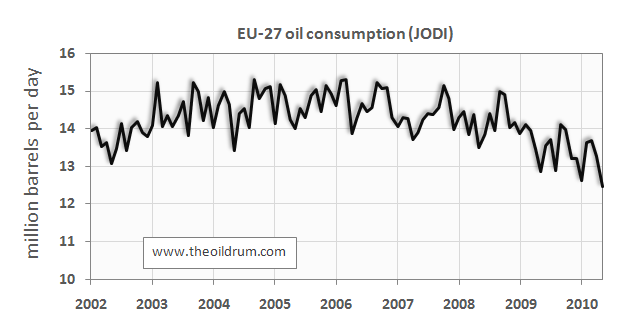
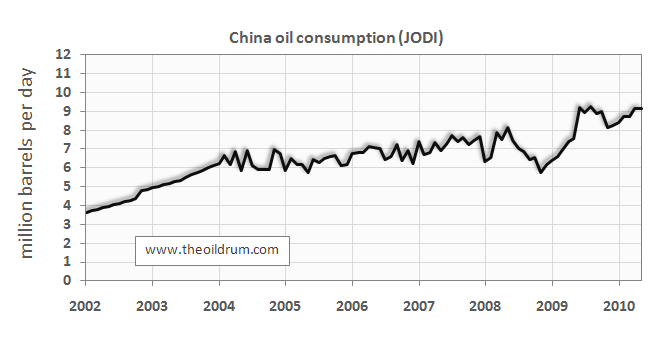
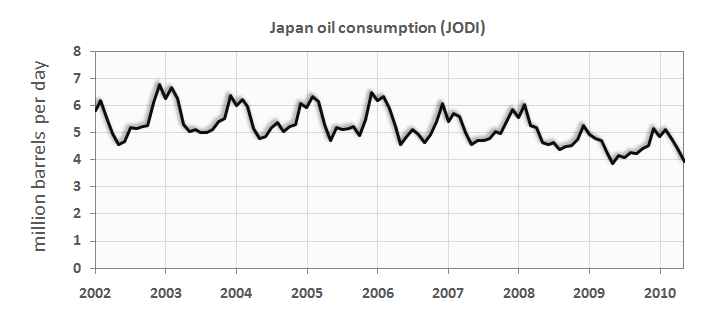
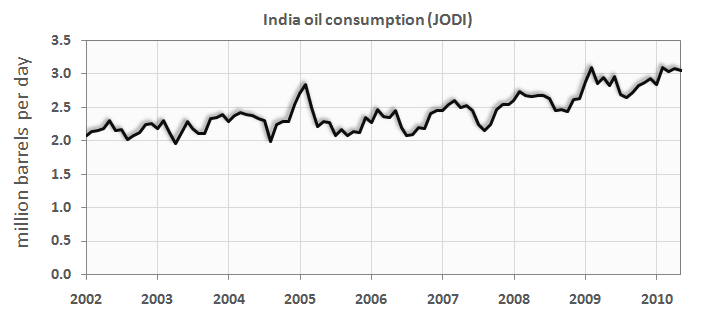
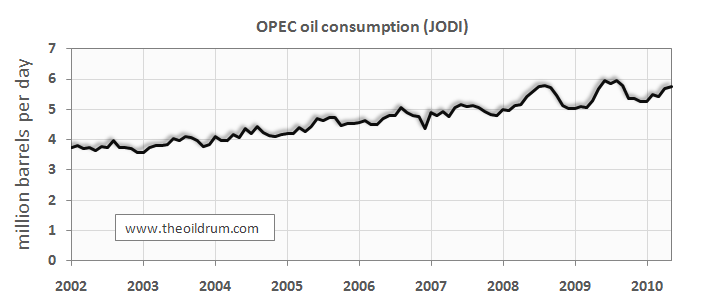
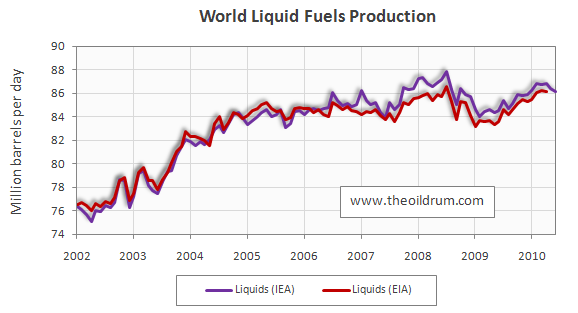
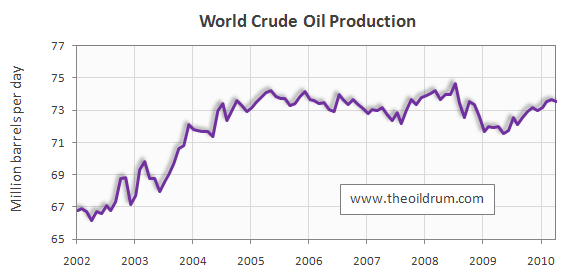
Peak oil notes - June 17Home sales take unexpected dip
No comments:
Post a Comment